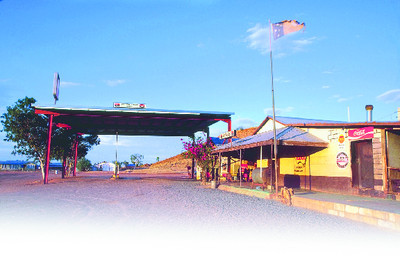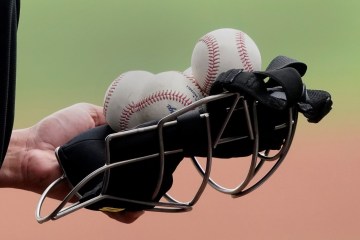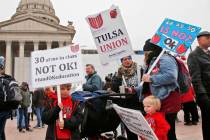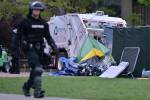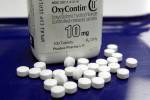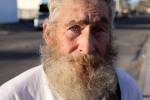Australian roads present unexpected dangers
Editor's note: Join Garry Sowerby, a four-time Guinness World Record holder for long-distance driving, on his tales of motoring mania. Follow his accounts of 30 years of global road adventures: out-driving the clock on a race around the world; narrowly escaping bandits' bullets in Kenya; and smuggling books behind the Iron Curtain. The master road tripper hasn't slowed down yet.
"It wouldn't hurt to have a blood test and make sure your liver is not damaged," the voice on the telephone was describing the effects of the methyl bromide poisoning. "You might need a complete blood transfusion."
I couldn't believe what I was hearing, but the man at the Poison Control Center in Perth, Australia, seemed to know what he was talking about.
The nausea was getting worse. My head was pounding. It was November 1997 and we had made it, unscathed, through some of the worst driving conditions in the world on our 7,500-mile trek between England and India. It had taken just under 12 days and now, with only Australia, New Zealand and North America left, we figured the remainder of our attempt to set a new around-the-world driving record would be a long, but safe and straightforward drive.
After a three-week wait for our Vauxhall Frontera (the British version of an Isuzu Rodeo) to be transported on a container ship from India to Australia's west-coast port of Perth, we were anxious to take on down under. But, after listening to the poison people, I visualized myself stuck in a hospital getting blood transfusions and liver tests while my British co-drivers Colin Bryant and Graham McGaw pushed on across the outback without me.
"Garry, we're on in one minute," Graham said. "This time it's BBC 1 and it's live." I could tell from his voice that he was getting tired of TV cameras and lights.
I cut off the Poison Control man in midsentence and told him I'd call back. It was hard to concentrate and still be upbeat during the interview when all I really cared about was the rest of what the poison expert had to say.
Two days earlier, when a customs officer at the port had opened the container carrying the Frontera, I knew something was wrong. The smell was staggering. My eyes watered but I thought the vile odor was likely due to rotting food that had been accidentally kicked under a seat during our nightmare drive through India. It turned out to be fumes from a methyl bromide and tear-gas concoction that Indian authorities had fumigated the container with, prior to loading it onto the container ship in Chennai.
I drove the truck for an hour that day, picking up a transit permit and supplies for the Australia leg. The next morning I awoke feeling like I had had a heavy date with a jug of Jack Daniel's whiskey. The pseudo hangover wouldn't go away; neither would the smell in the Frontera.
And now I found myself at a press conference commuting between TV cameras and telephone conversations with the Poison Control folks. They speculated the tear gas could have caused my illness but insisted the truck be checked for methyl bromide contamination.
Later that night, fumigation experts tested the interior of the truck and assured my condition was related to the tear gas. There was no trace of the methyl bromide: It had simply evaporated at sea. Good news for my long-term medical prognosis, but the thought of sitting in the Frontera across the Australian continent made my eyes water.
Driving in Australia was a welcome change from what we had become accustomed to in India and Pakistan. The Great Northern Road, which runs from Perth in western Australia to Darwin in the Northern Territory, was mostly poker straight. The horizon was clear, not the hazy blur we had witnessed in the subcontinent, and we didn't come across a horrific traffic accident every 100 miles.
In the daytime, not much moves along the Great Northern except for an occasional road train, massive three- and four-unit transport trucks up to 190 feet long. Cars were less frequent. But at night, things got hopping when the nocturnal kangaroos came out. And with breeding season in full swing, the beasties were on the move from sundown to sunup.
The plan for the transit of Australia was simple. Drive. We covered the 5,000-mile route across the desolate Outback in 89 hours with only one three-hour stop to sleep at the halfway point in Katherine, south of Darwin.
"What are you doing tomorrow, mates?" I'd joke to Colin or Graham.
"Straight road, 60 miles-an-hour." It was always the same down under.
We drove in shifts of anywhere from 20 minutes to five hours, promising we wouldn't wait until a dream appeared on the back of our eyelids before relinquishing control. Nothing stopped us in the Outback except fueling and our nap in Katherine. My mates and I lived on a diet of deep-fried food and packaged meat pies we picked up at the fuel stops that would make any Heart and Stroke Foundation director's head spin. Everything on-board from the maps to ZZ Top CDs smelled like tear gas.
The Australian leg of our around-the-world adventure ended in Sydney. I was surprised by the crush of media and curious onlookers who swarmed around the Frontera when we pulled up to the famous Sydney Opera House to have our logbook validated.
In the commotion, I could hear officials announcing our names and statistics of our drive. I reached into my briefcase and found the logbook. It was wrinkled and had a coffee stain splattered over the Frontera World Challenge logo on the cover. I opened it and, as I handed it to the timekeeper, I caught a fresh whiff of the smell that had almost ended it for me back at the beginning of the Australian leg.
And it brought a tear to my eye.
Garry Sowerby, author of "Sowerby's Road: Adventures of a Driven Mind," is a four-time Guinness World Record holder for long-distance driving. His exploits, good, bad and just plain harrowing, are the subject of World Odyssey, produced in conjunction with Wheelbase Communications. Wheelbase is a worldwide provider of automotive news and features stories.




